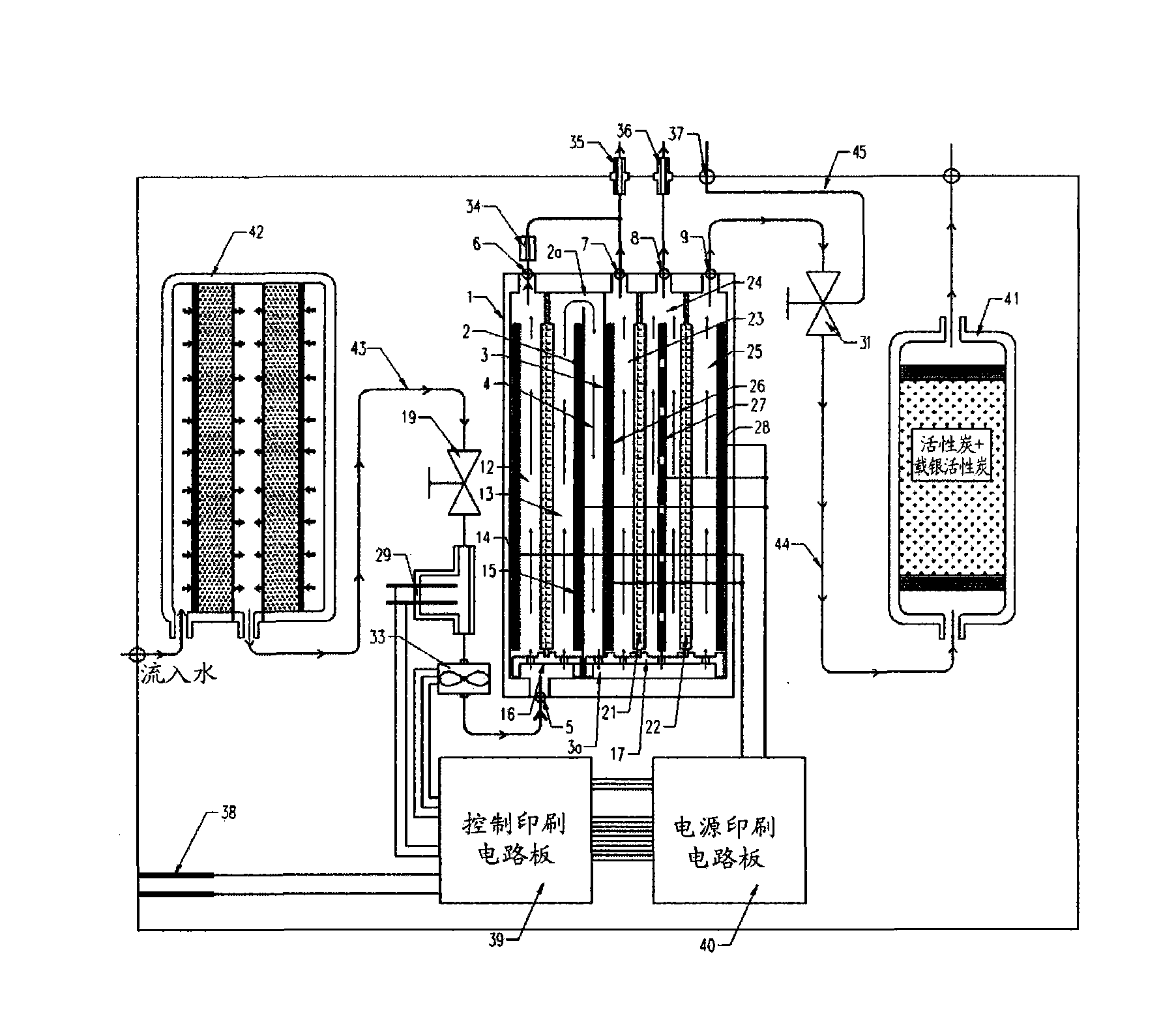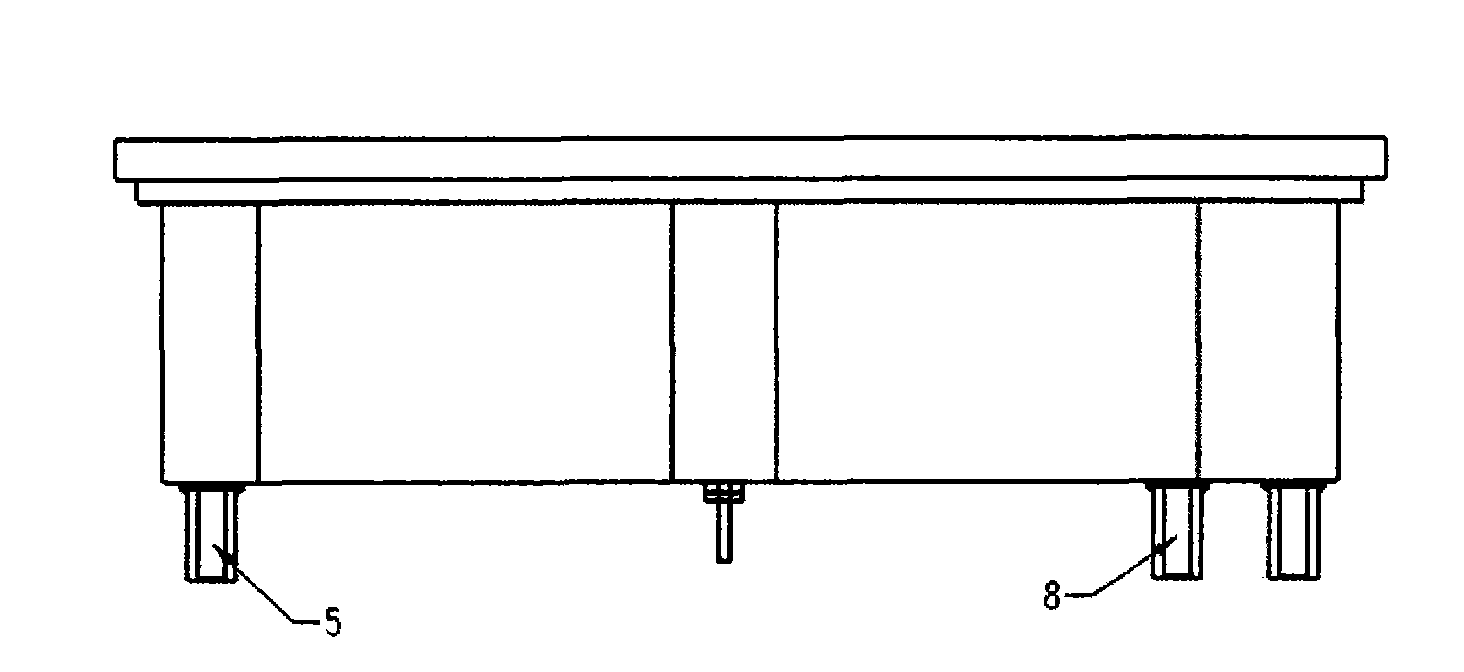Electrolysis water purifier for adjusting water outlet proportion
A technology of water output ratio and water purifier, which is applied in the direction of water/sewage treatment, water/sewage treatment equipment, water/sewage multi-stage treatment, etc. It can solve waste, inability to obtain high-quality functional water, and unstable water output ratio of electrolytic ionized water and other issues to achieve the effect of reducing water waste
- Summary
- Abstract
- Description
- Claims
- Application Information
AI Technical Summary
Problems solved by technology
Method used
Image
Examples
Embodiment 1
[0088] Test conditions:
[0089] The total water inflow into the electrolytic cell: 0.8L / min~1.5L / min
[0090] Table 2 Electrolytic characteristics of existing electrolytic water purifiers that are not controlled based on flow
[0091]
[0092] Table 3 The electrolytic characteristics of the electrolytic water purifier of the present invention controlled based on the flow rate
[0093]
[0094] Table 2 and Table 3 measured in Example 1 above are the measured values in the case of no control based on the flow rate and the case of control based on the flow rate, respectively. Referring to Table 2, for existing water purifiers, since there is no flow control, even if the flow of influent water changes, a constant voltage is still connected to the electrolytic cell, so that when the flow is small, the electrolysis is stronger, thus The pH of the discharged water becomes high, and when the flow rate is large, the pH of the discharged water becomes low due to a small amoun...
Embodiment 2
[0103] Test conditions:
[0104] The total inflow of water flowing into the electrolytic cell: 1.4L / min, the PH value of the inflow water: 7.6
[0105] Table 3 Electrolytic characteristics based on changes in the amount of electrolyte
[0106]
[0107] The above Table 3 shows the electrolysis based on the change in the amount of electrolyte by measuring the voltage and current applied to the electrolytic tank based on the change in the electrolyte flowing into the electrolytic tank (change in conductive resistance) and measuring the pH characteristics of each discharged water. characteristic. It can be seen here that when the amount of electrolyte is small and the conductive resistance value is large, the voltage applied to the electrolysis part is increased, and conversely, when the amount of electrolyte is large and the conductive resistance value is small, the voltage applied to the electrolytic cell is reduced .
[0108] In addition, it can also be seen that there is...
PUM
 Login to View More
Login to View More Abstract
Description
Claims
Application Information
 Login to View More
Login to View More - R&D
- Intellectual Property
- Life Sciences
- Materials
- Tech Scout
- Unparalleled Data Quality
- Higher Quality Content
- 60% Fewer Hallucinations
Browse by: Latest US Patents, China's latest patents, Technical Efficacy Thesaurus, Application Domain, Technology Topic, Popular Technical Reports.
© 2025 PatSnap. All rights reserved.Legal|Privacy policy|Modern Slavery Act Transparency Statement|Sitemap|About US| Contact US: help@patsnap.com



